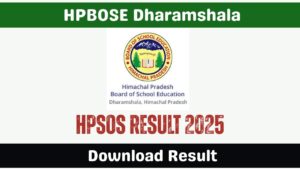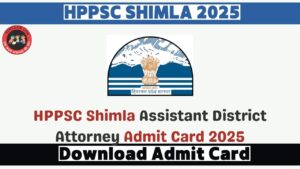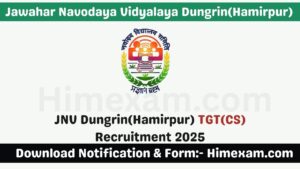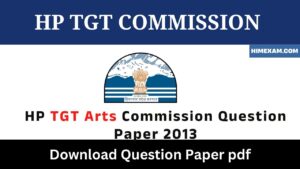Table of Contents
ToggleImportant Indian History Question Answer In English Set-5
||Important Indian History Question Answer In English Set-5||Important Indian History Question Answer for hpssc/hpsssb Set-5||
41. Who amongst the following also had the name ‘Devanama Piyadassi’?
(A) Mauryan King Ashoka
(B) Mauryan King Chandra-gupta Maurya
(C) Gautam Buddha
(D) Bhagwan Mahavira
Explanation:-The Edicts of Ashoka are a collection of 33 inscriptions on the Pillars of Ashoka, as well as boulders and cave walls, made by the Emperor Ashoka of the Mauryan dynasty during his reign from 269 BCE to 231 BCE. These inscriptions are dispersed throughout the areas of modern-day Bangladesh, India, Nepal and Pakistan and represent the first tangible evidence of Buddhism. In these inscriptions, Ashoka refers to himself as “Beloved of the Gods” and “King Priya-darshi.” The identification of King Priya-darshi with Ashoka was confirmed by an inscription discovered in 1915 by C. Beadon at Maski, the village in Raichur district of Karnataka. Another minor rock edict is found at the village Gujarra in Datia district of Madhya Pradesh. This also shows the Name “Asoka” in addition to usual “Devanam Piyadasi”.
42. The subject-matter of Ajanta Paintings pertains to
(A) Jainism
(B) Buddhism
(C) Vaishnavism
(D) Shaivism
Explanation:-The Ajanta Caves are the treasure house of delicate paintings that portray scenes from Jataka tales and from the life of Lord Buddha. Celebrated for its archaic wonder and laced with the series of carved artistry, Ajanta Cave paintings echo the quality of Indian creativity in perhaps the subtlest way. In the Ajanta wall-paintings, there is a profound modification from the art of early Buddhism. The Ajanta paintings stresses on religious romanticism with lyric quality, a reflection of the view that every aspect of life has an equal value in the spiritual sense and as an aspect of the divine.
43. Which of the following Craftsmanship was not practised by the Aryans ?
(A) Pottery
(B) Jewellery
(C) Carpentry
(D) Blacksmith
Explanation:-Iron was a metal unknown to the Aryans during the early Vedic age. The advent of iron is generally associated with the late or post-Vedic ages. So blacksmith did not exist during this period.
44. Mohammed-bin-Qasim conquered Sind in the year
(A) 712 A.D.
(B) 812 A.D.
(C) 912 A.D.
(D) 1012 A.D.
Explanation:The Arab conquest of Sindh by Muhammad Bin Qasim in 712 AD gave the Muslims a firm foothold on the sub-continent. Qasim’s conquest of Sindh and Punjab laid the foundations of Islamic rule in the Indian subcontinent. The description of Hiuen Tsang, a Chinese historian, leaves no doubt that the social and economic restrictions inherent in the caste differentiations of Hindu society had however, gradually sapped the inner vitality of the social system and Sindh fell without much resistance before the Muslim armies.
45. The words “Satyameva Jayate” in the State Emblem of India were taken from
(A) Upanishads
(B) Sama Veda
(C) Rig Veda
(D) Ramayana
Explanation:“Satyameva Jayate” (Truth Alone Triumphs) is a mantra from the ancient Indian scripture Mundaka Upanishad. Upon independence of India, it was adopted as the national motto of India. It is inscribed in Devanagari script at the base of the national emblem. The emblem and words ‘Satyameva Jayate’ are inscribed on one side of all Indian currency. The emblem is an adaptation of the Lion Capital of Asoka which was erected around 250 BC at Sarnath, near Varanasi in the north Indian state of Uttar Pradesh.
46. The earliest city discovered in India was
(A) Harappa
(B) Punjab
(C) Mohenjo Daro
(D) Sindh
Explanation:The ruins of Harrappa were first described in 1842 by Charles Masson in his Narrative of Various Journeys in Balochistan, Afghanistan, and the Punjab, INDIAN HISTORY SGAE–86 where locals talked of an ancient city extending “thirteen cosses” (about 25 miles), but no archaeological interest would attach to this for nearly a century. In 1856, General Alexander Cunningham, later director general of the archeological survey of northern India, visited Harappa where the British engineers John and William Brunton were laying the East Indian Railway Company line connecting the cities of Karachi and Lahore. In 1872–75 Alexander Cunningham published the first Harappan seal (with an erroneous identification as Brahmi letters). It was half a century later, in 1912, that more Harappan seals were discovered by J. Fleet, prompting an excavation campaign under Sir John Hubert Marshall in 1921–22 and resulting in the discovery of the civilization at Harappa by Sir John Marshall, Rai Bahadur Daya Ram Sahni and Madho Sarup Vats, and at Mohenjo-daro by Rakhal Das Banerjee, E. J. H. MacKay, and Sir John Marshall.
47. The famous rock-cut temple of Kailasa is at
(A) Ajanta
(B) Badami
(C) Mahabalipuram
(D) Ellora
Explanation:Kailashnath Temple is a famous temple, one of the 34 monasteries and temples, extending over more than 2 km, that were dug side by side in the wall of a high basalt cliff in the complex located at Ellora, Maharashtra, India. Of these 34 monasteries and temples, the Kailasa (cave 16) is a remarkable example of Dravidian architecture on account of its striking proportion; elaborate workmanship architectural content and sculptural ornamentation of rock-cut architecture. It is designed to recall Mount Kailash, the abode of Lord Shiva. It is a megalith carved out of one single rock. It was built in the 8th century by the Rashtrakuta king Krishna I.
48. Epigraphy means
(A) The study of coins
(B) The study of inscriptions
(C) The study of epics
(D) The study of geography
Explanation:Epigraphy is the study of inscriptions on rocks, pillars, temple walls, copper plates and other writing material. It is the study of inscriptions or epigraphs as writing; it is the science of identifying graphemes, clarifying their meanings, classifying their uses according to dates and cultural contexts, and drawing conclusions about the writing and the writers. It serves as primary documentary evidence to establish legal, socio-cultural, literary, archaeological, and historical antiquity on the basis of engravings.
49. Which among the following has not been found in the excavation of Harappan sites ?
(A) Drains and well
(B) Fort
(C) Reservoirs
(D) Temple with Shikhar
Explanation:Sikhara, a Sanskrit word translating literally to “mountain peak”, refers to the rising tower in the Hindu temple architecture of North India. Sikhara over the sanctum sanctorum where the presiding deity is enshrined is the most prominent and visible part of a Hindu temple of North India. Sikhara was a major feature of the medieval times.
50. Which among the following ‘MATH’ is related with Buddhism?
(A) Dakhma
(B) Chaitya
(C) Khangah
(D) Angeri
Explanation:A chaitya is a Buddhist or Jain shrine including a stupa. In modern texts on Indian architecture, the term chaitya-griha is often used to denote assembly or prayer hall that houses a stupa. Chaityas were probably constructed to hold large numbers of devotees and to provide shelter for them
Join Our Telegram Group :- Himexam









